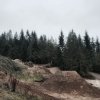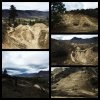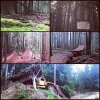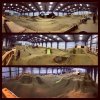bikesarefun
Likes Bikes and Dirt
So.... a little side project on which I've been working....
This is a guideline document that explains some of the basic principles of dirt jump design. Having spoken with major insurers in NSW, a document like this (once suitably approved) will make it much easier to get approval for quality public facilities. It's still a fairly early draft, but I thought it worthwhile throwing it up here for feedback.
The post is looking a bit bare, so here's a few shots from places I was able to visit earlier in the month in BC and Washington.




This is a guideline document that explains some of the basic principles of dirt jump design. Having spoken with major insurers in NSW, a document like this (once suitably approved) will make it much easier to get approval for quality public facilities. It's still a fairly early draft, but I thought it worthwhile throwing it up here for feedback.
The post is looking a bit bare, so here's a few shots from places I was able to visit earlier in the month in BC and Washington.




Attachments
-
1.4 MB Views: 160
